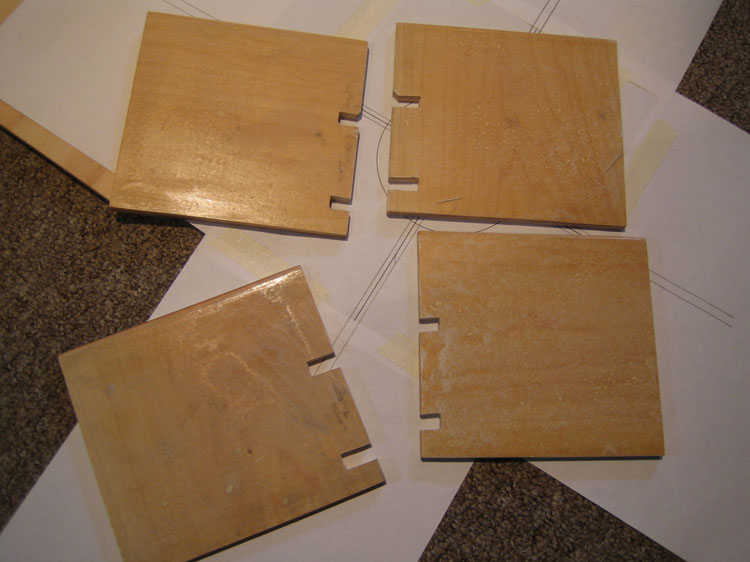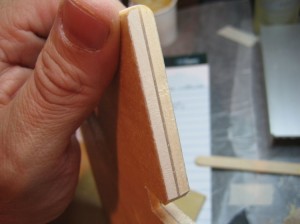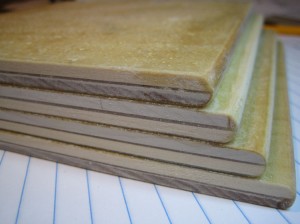Now that the fins have fully cured I cut them down to size with a jigsaw and a fine plywood blade. Because of the fiberglassing I wore goggles and a respirator. It’s tough to work when your covered from head to toe but it beats getting fiberglass dust in your lungs and eyes. That stuff makes drywall dust look course by comparison. It gets into EVERYTHING. I keep my shopvac pointed at the saw blade while I cut to minimize floating material in my shop.
I half-rounded the leading edges and squared off the trailing, root and outer edges with a sanding block with progressively finer grains. I then brushed a thin pure epoxy coat onto the freshly cut leading, trailing and outer edges and allowed it to soak into the raw wood before sanding. This will seal the outer edges. I won’t do the root edge until the fins are mounted so that the raw epoxy will soak into the wood for a better bond.
The fiberglass and resin made the fins very tough and difficult to sand. I’d like to try a stress test sometime with some scrap to be sure but I’d guess offhand that the fins are at least 5-8 times stronger than bare wood.
The last Cobra’s fins were epoxied onto the outer body tube. This model’s body tube will be slit to allow the fins to be mounted “through-the-wall”. They will be fiberglassed directly onto the motor core. The notches in the fins allow them to mount over the motor mount’s 1/4″ plywood centering rings within the body.
The fresh-but edges of the fins clearly shows the glass-wood-glass-wood-glass layers. It’s a heck of a lot more work than the old balsa fin days!


